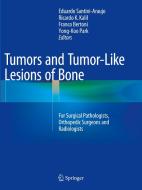
Coagulopathies
- Editore:
Books LLC, Reference Series
- EAN:
9781234598891
- ISBN:
1234598892
- Pagine:
- 56
- Formato:
- Paperback
- Lingua:
- Inglese
Descrizione Coagulopathies
Source: Wikipedia. Pages: 55. Chapters: Activated protein C resistance, Amyloid purpura, Antiphospholipid syndrome, Antithrombin III deficiency, Bernard-Soulier syndrome, Bleeding diathesis, Cavernous sinus thrombosis, Coagulopathy, Congenital afibrinogenemia, Congenital amegakaryocytic thrombocytopenia, Deep vein thrombosis, Disseminated intravascular coagulation, Dysfibrinogenemia, Essential thrombocytosis, Evans syndrome, Factor V Leiden, Factor XIII deficiency, Glanzmann's thrombasthenia, Gray platelet syndrome, Harris platelet syndrome, Heparin-induced thrombocytopenia, Hermansky-Pudlak syndrome, Hyperprothrombinemia, Hypoprothrombinemia, Idiopathic thrombocytopenic purpura, Kasabach-Merritt syndrome, May-Hegglin anomaly, Neonatal alloimmune thrombocytopenia, Onyalai, Phlebothrombosis, Platelet storage pool deficiency, Platelet transfusion refractoriness, Primary fibrinogenolysis, Protein C deficiency, Protein S deficiency, Prothrombin G20210A, Pseudo gray platelet syndrome, Purpura fulminans, Quebec platelet disorder, Scott syndrome, Sticky platelet syndrome, Superficial vein thrombosis, Thrombophilia, Thrombotic microangiopathy, Thrombotic thrombocytopenic purpura, Venom-induced consumption coagulopathy, Von Willebrand disease. Excerpt: Deep vein thrombosis, or deep venous thrombosis, (DVT) is the formation of a blood clot (thrombus) in a deep vein, predominantly in the legs. Non-specific signs may include pain, swelling, redness, warmness, and engorged superficial veins. Pulmonary embolism, a potentially life-threatening complication, is caused by the detachment (embolization) of a clot that travels to the lungs. Together, DVT and pulmonary embolism constitute a single disease process known as venous thromboembolism. Post-thrombotic syndrome, another complication, significantly contributes to the health-care cost of DVT. In 1856, German pathologist Rudolph Virchow postulated the interplay of three processes resulting in venous thrombosis, now known as Virchow's triad: a decreased blood flow rate (venous stasis), increased tendency to clot (hypercoagulability), and changes to the blood vessel wall. DVT formation typically begins inside the valves of the calf veins, where the blood is relatively oxygen deprived, which activates certain biochemical pathways. Several medical conditions increase the risk for DVT, including cancer, trauma, and antiphospholipid syndrome. Other risk factors include older age, surgery, immobilization (as with bed rest, orthopedic casts, and sitting on long flights), combined oral contraceptives, pregnancy, the postnatal period, and genetic factors such as a non-O blood type. The frequency of occurrence (incidence) increases dramatically from childhood to old age; in adulthood, about 1 in 1000 adults develop DVT annually. Individuals suspected of having DVT may be assessed using a clinical prediction rule such as the Wells score. A D-dimer test may also be used to assist with excluding the diagnosis (because of its high sensitivity) or to signal a need for further testing. Diagnosis is most commonly done with ultrasound of the suspected veins. Anticoagulation is the standard treatment; typical medications include a low-molecular-weight heparin and a vitamin K antagonist. We












